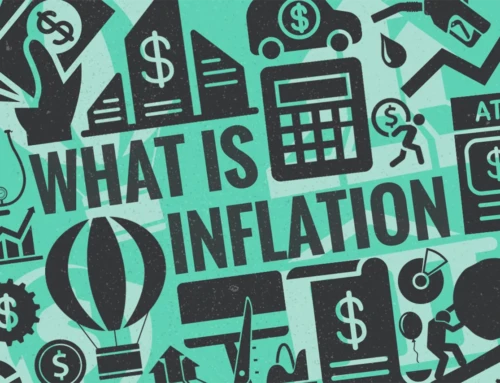Redirecting Focus

It’s been a little while since we’ve shared our views on the topic of inflation, (beyond our day-to-day client meetings, where we’ve shared them ad nauseum), and we know you love when we talk about it. So, we thought we’d write to try and redirect your attention back to the real issue.
When we say the word inflation, most minds go to rising prices; what we’re paying at the pump, what our grocery bills look like, or to the ever skyward shooting health insurance premiums we pay. But much like a fever is not the root illness, price increases are not the root cause of inflation. Rather, price increases are a symptom of inflation. By definition, inflation is the erosion of value in a currency. When the value of a currency, the US Dollar in our case, degrades, we have to come up with more of them to complete the same transactions that fewer used to afford.
Think supply and demand here. When more of a resource becomes available, the bits of that resource that were floating around prior become worth at least a little bit less, and vice versa. The Fed created (they don’t print them anymore because printing all that paper would deforest the entire planet in short order, so they just create them digitally with their computers) $9 trillion new dollars between the GFC (Global Financial Crisis) and March of 2022. The Fed used all these new dollars to buy Treasury bonds, which reduced the cost of borrowing for Congress, and Mortgage Backed Securities (MBSs), which reduced borrowing costs for mortgagors and stimulated the economy.
To give you a little context on what that number really means, The Fed held between $700 billion and $800 billion of Treasury notes ($0 MBSs) on its balance sheet before the recession. $700 billion goes into $9 trillion 1,285 times!
Now, it’s important to understand that this was a new tool for the Fed in 2009. The Bank of Japan used it prior. In fact, they coined the term Quantitative Easing (QE) in the early 2000’s. But this was the first at bat for the Fed, and the US economy is veerryy different from Japan’s, so there were bound to be some unintended consequences. QE helped drive interest rates to 0% (along with their action of lowering the interest rate they charge their member banks to 0% for years), which was intended, drove stock and real estate prices into the stratosphere (also very much intended), but also resulted in a lot of those dollars ending up in the hands of consumers when Congress distributed them to help us through the pandemic. This was NOT intended (despite the Fed’s jawboning for years prior that Congress needed to take the economic stimulus ball for a while because their fingers were tired from all that new dollar creating mouse clicking) and had the unexpected and VERY unwelcome effect of driving up the cost of durable goods. To misdirect our attention, the Fed pointed at supply chain bottlenecks, which were really only a problem because we consumers were spending all these dollars on vastly more durable goods than we had before (we were stuck at home so we needed bigger TVs!).
But after the bottlenecks released and traffic resumed, prices kept rising. The Fed was thus forced to acknowledge the inflation genie was out of the bottle and had to take steps to avoid a complete and irreparable meltdown in the value of the US Dollar. Their response was to raise their lending rate sharply and rapidly in 2022 and begin deleting the dollars from the system as their bonds matured. This was and is the Quantitative Tightening part of this two-step dance. But the Fed has chosen a slow song for QT, because they know markets are badly addicted to the new dollars they created and they want to ease the come down. This is why inflation is not coming to heel at the Fed’s target of 2% any time soon.
Now, we’re going to say something that may surprise some of you: the media mill is suggesting tariffs will cause inflation, but tariffs don’t cause inflation. Tariffs are a tax, and taxes don’t cause inflation. They most certainly can contribute to the symptom of rising prices, because so long as consumers keep buying the tariffed goods from the tariff paying importers, those companies will increase the price they ask for the goods to compensate and maintain their profit margins. To be clear, we think the idea of trying to revive an economic policy from 135 years ago, that failed miserably, is unbelievably unsound, and has and will continue to cause untold economic and political damage (most of which is still “in the pipeline”). But we’re sticklers for the proper use of words. And while the Fed is right to sweat the impact of this wild west, from the hip style tariff policy, the tariffs will not add to the dilution of the value of the US dollar. The Fed also knows this BTW. But that’s a whole other blog post.
The supply of dollars circulating in the economy is lower than it was at peak but is still sky high relative to where it was before the Fed embarked on their QE adventure back in ‘09. And human nature dictates that the law of supply and demand cannot be broken.
While we wait for the full effect of the tariffs (and even just the threat of tariffs), there are strategies you can employ to mitigate the effects on your own personal financial position, and most other financial advisors are not talking about them. Because they’d be cutting off their own revenue supply and violating the employment contracts they have with their broker dealers.
But we can.
Written
August 20, 2025
Read Time
5 min read
More Posts




